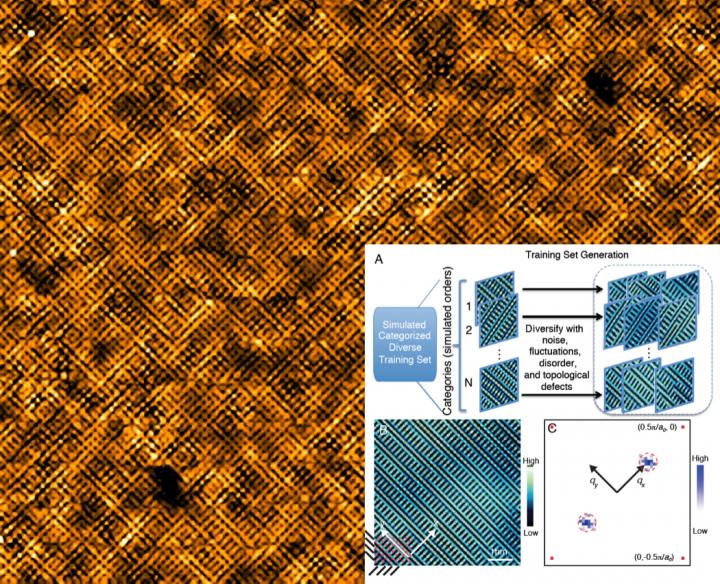Machine learning helps solve a puzzle of how strongly interacting electrons behave at atomic level

Credit: JC Séamus Davis
For the last 100 years materials such as gold and silicon have been conduits to the force which has powered civilisation: electronics. And in all such conventional materials the behaviour of electrons is simple: they largely ignore each other.
However, future electronics designed for quantum technologies requires development of new quantum materials. In quantum materials, e.g. high temperature superconductors, electrons interact so strongly and behave so strangely that, until now, they have defied explanation.
But now, scientists have made a significant breakthrough in both technique and understanding. Based on a suite of 80 artificial neural networks (ANN) that they had designed and trained to recognize different forms of electronic matter, machine learning has discovered a new state called a Vestigial Nematic State (VNS).
Lead author, Prof. JC Séamus Davis, of University of Oxford, said: ‘I have focused on visualisation of electrons at atomic level. Twenty years ago we developed a microscope that could see directly where all electrons are in the quantum materials, and how the function.
‘In this new collaboration with Professors Eun-Ah Kim (Cornell) and E. Kathami (San Jose State) , we fed an electronic image archive gathered over about 20 years – 1000s of electronic structure images – into these artificial neural networks. To my amazement it actually worked! The Vestigial Nematic State had been predicted by theorists but there was no experimental evidence. It was thrilling to see how the new machine learning technique discovered it hiding in plain sight. ‘
It is a milestone for general scientific technique as it demonstrates how machine learning techniques can process and identify specific symmetries of highly complex image-arrays from electronic quantum matter data.
By fusing machine learning with quantum matter visualisation the scientists believe that it will accelerate quantum material advances, especially in the area of high temperature superconductivity, in the quest for room temperature quantum computers.
###
For more information or to request interviews and images, please contact the University of Oxford press office at [email protected] / 01865 280730.
Read the full article: https:/
Notes to editors
About the University of Oxford
Oxford University has been placed number 1 in the Times Higher Education World University Rankings for the third year running, and at the heart of this success is our ground-breaking research and innovation.
Oxford is world-famous for research excellence and home to some of the most talented people from across the globe. Our work helps the lives of millions, solving real-world problems through a huge network of partnerships and collaborations. The breadth and interdisciplinary nature of our research sparks imaginative and inventive insights and solutions.
Through its research commercialisation arm, Oxford University Innovation, Oxford is the highest university patent filer in the UK and is ranked first in the UK for university spinouts, having created more than 170 new companies since 1988. Over a third of these companies have been created in the past three years.
Media Contact
Ruth Abrahams
[email protected]




